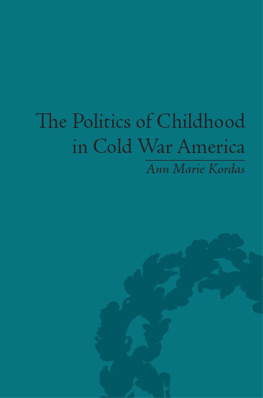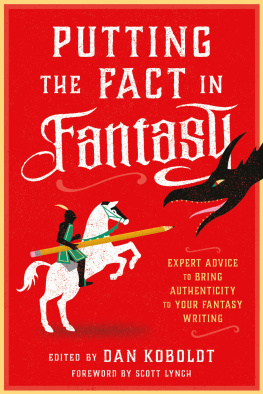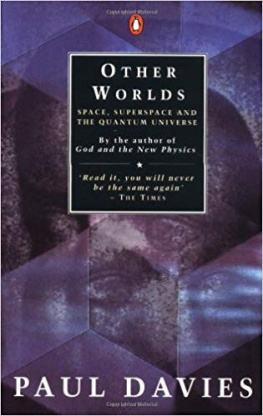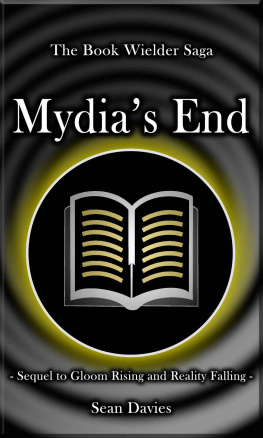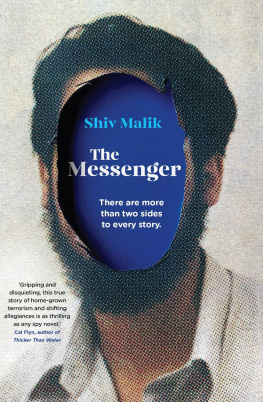Fake, Fact, and Fantasy
Childrens Interpretations
of Television Reality

First published by
Lawrence Erlbaum Associates, Inc., Publishers
10 Industrial Avenue
Mahwah, New Jersey 07430
Transferred to Digital Printing 2009 by Routledge
270 Madison Ave, New York NY 10016
2 Park Square, Milton Park, Abingdon, Oxon, OX14 4RN
Copyright 1997 by Lawrence Erlbaum Associates, Inc.
All rights reserved. No part of the book may be reproduced in any form, by photostat, microform, retrieval system, or any other means, without the prior permission of the publisher.
Cover design by Kathryn Houghtaling
Library of Congress Cataloging-in-Publication Data
Davies, Mire Messenger.
Fake, fact, and fantasy: childrens interpretations of television reality / by Mire Messenger Davies.
p. cm.
Includes bibliographical references and index.
ISBN 0-8058-2046-9 (alk. paper). ISBN 0-8058-2047-7 (pbk.: alk. paper)
ISBN 978-1-1366-8712-9 (ePub)
1. Television and childrenUnited States. 2. Social perception in childrenUnited States. 3. Cognition in childrenUnited States. 4. Visual literacyUnited States. I. Title.
HQ784.T4D38 1996
Publishers Note
The publisher has gone to great lengths to ensure the quality of this reprint but points out that some imperfections in the original may be apparent.
Contents
Dedicated to the memory of my father, Terry Messenger
My first storyteller
19161995
This book is based on research carried out at the Annenberg School for Communication, University of Pennsylvania, in 1993. I was privileged to be one of the first group of Annenberg Research Fellows, a group of visiting scholars supported by the school in carrying out research on a particular topic. Our topic that first year was Media Literacy in Children, and my four fellow scholars (Roger Desmond, Dafna Lemish, Robert Kubey, and Tamar Liebes), myself, and the head of the Fellowship Program, Elihu Katz, debated long and energetically about what this term might mean.
Some of the results of these deliberations are in this book, and I apologize to my distinguished colleagues if I have not done justice to their ideas and expertise in my treatment of our subject. I am aware that there are other, fuller, or more precise definitions of the term media literacy than the ones I write about herebut this is how it turned out for me. I am extremely grateful to the Annenberg School for the opportunity of carrying out the project, and I would like to express my thanks not only for its financial support, but also to its teaching, library, computing, and office staff for their help and kindness. I would particularly like to thank the graduate students who helped with the data collection and analysis in this project: Andrea McDonald, Darin Klein, and Bill Mikulak.
The other group of people without whom the project could not have been completed are the children who are the subjects of the book. Enormous thanks are due to the boys and girls of Chestnut Hill Academy and Springside School, Philadelphia, for sharing their ideas and insights so freely and eloquently. Again, I am conscious of not doing full justice to the insights, imagination, and intelligence of my young subjects; they gave me far more than could be dealt with in full here. It was a great privilege to talk to them, and I wish them success in the rest of their school careers. Thanks are also due to the principals of the schools, to the parents, and to the childrens class teachers for their sympathetic cooperation in setting up the project.
Finally, I would like to pay tribute to my former colleagues and students in the College of Communication, Boston University, where I was working as Associate Professor of Broadcasting at the time of the Fellowshipand not just for giving me time off. I learned to respect the art and craft of television production from my friends at BU. Although I am now back in my native city of London (working here, too, alongside skilled media professionals at the London College of Printings School of Media), I hope that my American influences will stay with me. Surprising though it may seem to some colleagues in the United States, many of us teachers and students on this side of the Atlantic believe that American culture has greatly enriched our own. The American courtesy and hospitality we encountered is gratefully remembered by all the family.
Thanks to Steve Cameron in Boston for advice on computing, and to Godfrey Lee at the LCPDT, for the same, and to Huw Davies for backup help.
Finally, as always, thanks to my familyJohn, Tom, Hannah, Huw, and Elifor being tolerant of the hours spent with the powerbook, for their useful ideas and criticisms, and for taking my mind off it when necessary.
Mire Messenger Davies
1
Is that a real train?
(Small boy, aged about three, to his mother, as they stood on a suburban station platform, watching the London train approach.)
What idea of a train was in this little boys mind when he asked this question? The question implied that the little boy had some conception of unreal trains against which he was comparing this one. Would this conception of real/unreal be based on experience of pictures? Or stories? Or fantasy play? Or television, or film, or toys, all of which, as an urban child in the 1990s, he would have had experience of? Perhaps this little boy was comparing the oncoming train to a toy train; or he might have been thinking of a televised train like Thomas the Tank Engine. Both have elements of reality and unreality; for instance, you can play with one, but not with the other. On the other hand, Thomas the Tank Engine, although it only appears in the flat, pictorial world of television, moves by itself and has properly scaled human figures walking round it. The train in the distance obviously raised some of these questions in this toddlers mind.
VISUAL LITERACY
Perhaps the oncoming London train presented a perceptual problem of perspective to the little boy. Perhaps, in the distance, it looked as small as a toy, or as flat as a picture to him. It did not to me, but then, I do not consciously notice things like perspective any more. I long ago internalized the habit of using depth and distance cues to assess the size and proximity of objects, probably when I was a baby. Recognizing the artificial techniques of representing distance in a picture is different, though. I distinctly remember the first time I noticed the artistic technique of perspective. I was six years old and there was a poster on the wall of my school classroom with a representation of a path converging to a point on the horizon. I realized that if I wanted to make my drawings of paths look real, I had to draw converging lines, like an upturned V, instead of parallel ones. I was very proud of my discovery and all my own drawings from then on had upturned-V paths in them. Later I realized that a lot of other people had already made this discovery, and even later, to my surprise, I found out that artistic perspective was not just something to be stumbled upon; it was also the product of an early form of artistic technology; artists like Leonardo had used special gadgets to view distant scenes and to mathematically represent the relationship between objects in space on the canvas.



